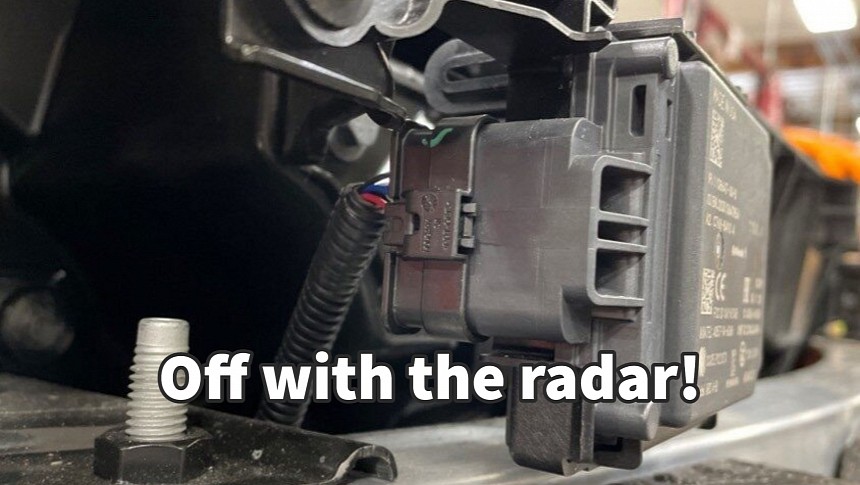Several Tesla Model S owners complained on Tesla Motors Club forums that the service center physically removed the radar sensors from their vehicles. The explanation is that the sensors are no longer used following the transition to Tesla Vision.
Software companies pioneered a new sales model, where the customers only pay for using the software. Features can be added or removed at the developer's discretion, even if you "bought" them. Sometimes, the whole computer program was killed, leaving people who bought it with nothing. While people got accustomed to not owning the software, it is a common understanding that you own the hardware you buy. This is all the more true for cars, where every feature and option you paid for would be yours (or is transferred to the next owner along with the car) until the vehicle gets scrapped.
Recent years brought the blurring of lines between owning and renting hardware features, and Tesla is the carmaker that started the trend. All Tesla vehicles are shipped with all the hardware needed, although certain features are behind a paywall. You pay if you want and when you want to use them. Other carmakers followed suit, with some making bizarre choices of locking seat heating or CarPlay support. Still, none tried to physically remove components from people's cars during the ownership and pretend it was OK.
Well, none except Tesla. Several Model S owners shared on forums and social media that Tesla initiated a service campaign to remove the radar sensors from vehicles with them. The explanation was that the sensors aren't needed anymore because a software update made them (or is about to make them) obsolete. Instead, Tesla Vision would take over, offering similar functionality. Yet, instead of disabling them in software, Tesla took the step to remove the sensors physically, annoying owners. Worse, this happens when people check in Service Centers for unrelated issues.
When asked why Tesla wanted to do that, they were offered diverse explanations. Some were told the sensors still consume energy and that removing them would make the car more efficient. Others learned that the radar sensors are prone to water ingress, which is no better than the former explanation. What's puzzling is that many people kept their cars specifically because they were fitted with radar sensors. As good as Tesla Vision is, it can't compete with radar in certain situations. Tesla acknowledged that and shipped the newer Model S EVs with HW4 sensor suite, which includes an HD radar sensor.
Removing radar sensors is just one way Tesla assumes ownership of car parts people paid for. When people replace their battery packs, Tesla keeps the old pack. Even if defective, these packs still hold much value and can be remanufactured. In the case of the Model S, Tesla later sold remanufactured packs to people replacing their batteries for around $14,000 plus taxes. The same happens when you upgrade the wheels on your Tesla. You're not getting your old wheels back, Tesla keeps them. It seems like the EV maker thinks that everything on the vehicles actually belongs to Tesla, not the car's owner.
Recent years brought the blurring of lines between owning and renting hardware features, and Tesla is the carmaker that started the trend. All Tesla vehicles are shipped with all the hardware needed, although certain features are behind a paywall. You pay if you want and when you want to use them. Other carmakers followed suit, with some making bizarre choices of locking seat heating or CarPlay support. Still, none tried to physically remove components from people's cars during the ownership and pretend it was OK.
Well, none except Tesla. Several Model S owners shared on forums and social media that Tesla initiated a service campaign to remove the radar sensors from vehicles with them. The explanation was that the sensors aren't needed anymore because a software update made them (or is about to make them) obsolete. Instead, Tesla Vision would take over, offering similar functionality. Yet, instead of disabling them in software, Tesla took the step to remove the sensors physically, annoying owners. Worse, this happens when people check in Service Centers for unrelated issues.
When asked why Tesla wanted to do that, they were offered diverse explanations. Some were told the sensors still consume energy and that removing them would make the car more efficient. Others learned that the radar sensors are prone to water ingress, which is no better than the former explanation. What's puzzling is that many people kept their cars specifically because they were fitted with radar sensors. As good as Tesla Vision is, it can't compete with radar in certain situations. Tesla acknowledged that and shipped the newer Model S EVs with HW4 sensor suite, which includes an HD radar sensor.
Removing radar sensors is just one way Tesla assumes ownership of car parts people paid for. When people replace their battery packs, Tesla keeps the old pack. Even if defective, these packs still hold much value and can be remanufactured. In the case of the Model S, Tesla later sold remanufactured packs to people replacing their batteries for around $14,000 plus taxes. The same happens when you upgrade the wheels on your Tesla. You're not getting your old wheels back, Tesla keeps them. It seems like the EV maker thinks that everything on the vehicles actually belongs to Tesla, not the car's owner.







